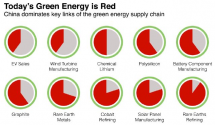You are using an out of date browser. It may not display this or other websites correctly.
You should upgrade or use an alternative browser.
You should upgrade or use an alternative browser.
News on China's scientific and technological development.
- Thread starter Quickie
- Start date
Hendrik_2000
Lieutenant General
That'd be wonderful. But I think there are challenges ahead.Thats very interesting. I wonder if it could work in human veins and arteries. That could be useful for treating atherosclerosis.
First of all, they will have to shrink it further down. This robot is still too big for (human) blood vessels.
Blood vessels are "tender" and in "irregular" shapes than the engine pipelines. I'd imagine it's going to be a lot more difficulty for this robot to move in such environment. The robot currently moves in pipes based on the "principle of high frequency peristalsis movement (高频蠕动运动原理)". IIUC, that means that it probably needs a hard surface to "scale".
speaking of nuclear, is there any news about TMSR-LF1?
Don't forget nuclear too. China is doing better on nuclear than many Western countries when it comes to bang for the buck and is leading at the front when it comes to 4th gen reactors.
Actually one of the most missed points. Russia is leading the conventional reactor technology but china has several salt reactor projects and thorium projects at least as far ahead of western research if not considerably more ahead.
Will become more obvious over longer timespan due to how nuclear technology trials stretch out.
China owns nearly 40 percent of the standard essential patents for 5G technology, staying at the top of the world rankings, according to a new report by the China National Intellectual Property Administration (CNIPA).
The country has entered a critical period of advancing large-scale applications of 5G technology almost three years after it greenlighted the commercial use of 5G in 2019, China's Ministry of Industry and Information Technology (MIIT) said Monday.
More than 210,000 standard-essential patents for 5G are declared worldwide at present, involving almost 47,000 patent families. China has declared 18,728 patent families, accounting for 39.9 percent of the world's total, followed by the U.S. at 34.6 percent and South Korea at 9.2 percent, the CNIPA report said.
A patent family is a collection of patent applications covering the same or similar technical content.
Chinese tech company Huawei declared 6,583 patent families, accounting for 14 percent and taking the lead among the global applicants.
In addition, the report also highlighted that among the top 15 patent applicants in the world, seven are Chinese companies, with two each from the U.S., Japan, Europe, and South Korea.

